Help
Community21 has selected some case study communities and projects to share across the network to inspire and inform others. Should we be featuring yours? If so get in touch.
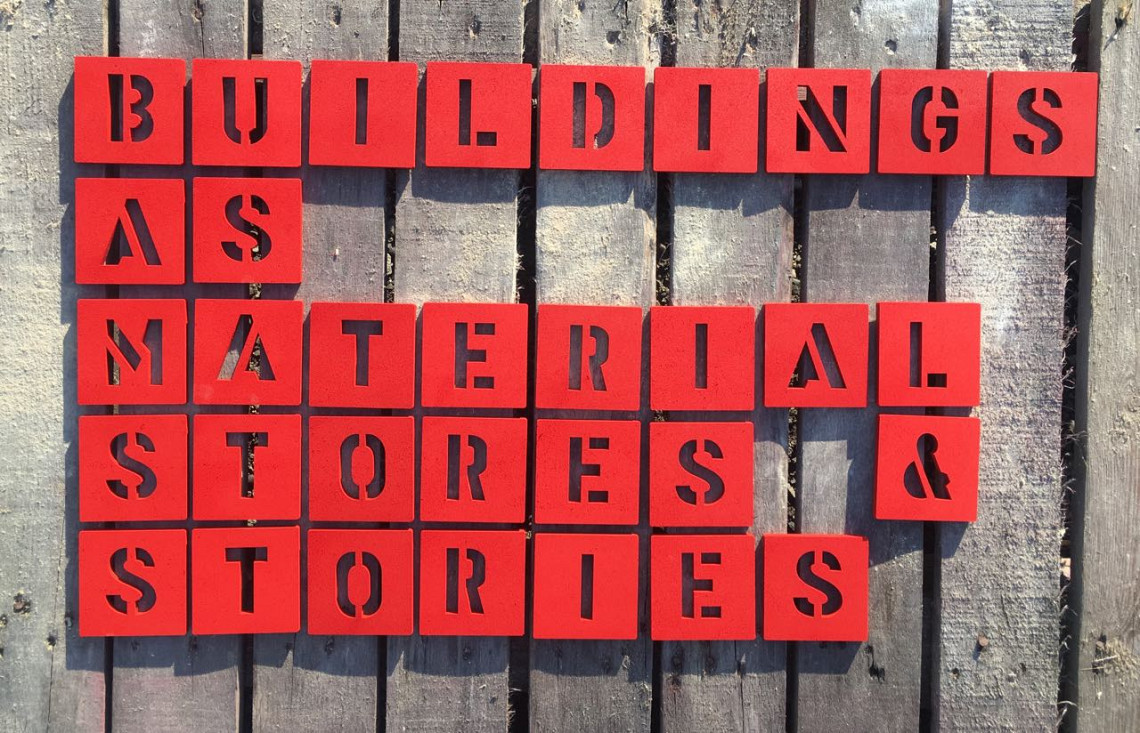
Community21 team in collaboration with Local Works Studio are presenting an exhibition of mapped waste materials and their meanings as a vision towards the 'circular city' at FutureBuild 2019 in London.
The exhibition designed by Nick Gant presents the notion of 'Buildings as material stores'(Baker-Brown) which explores designing buildings for disassembly and demonstration of how what would be considered waste materials can be continually reused in circular systems in the future - We therefore only 'borrow' the resources for the life of the form of the building.
It also considers 'Buildings as materials stories' (Gant) which equally seeks to promote the narratives and stories that can be exploited when we reuse and recycle materials. When we recycle the material we also recycle its history and meaning. We design means to elevate both the social and cultural value as well as the material value of the fabric of the city through authentic re-use and material messaging and language.
FutureBuild is one of the largest building industry expositions in the world and our exhibition forms part of the WasteZone. The WasteZone is curated by Duncan Baker-Brown alongside our exhibition there are talks from leading thinkers from across the globe relating to circular economies.
The exhibit highlights products developed as part of the EU funded Sustainable & Bio Resources for Construction Project led (in the UK by Duncan) which also generously supported this exhibition.
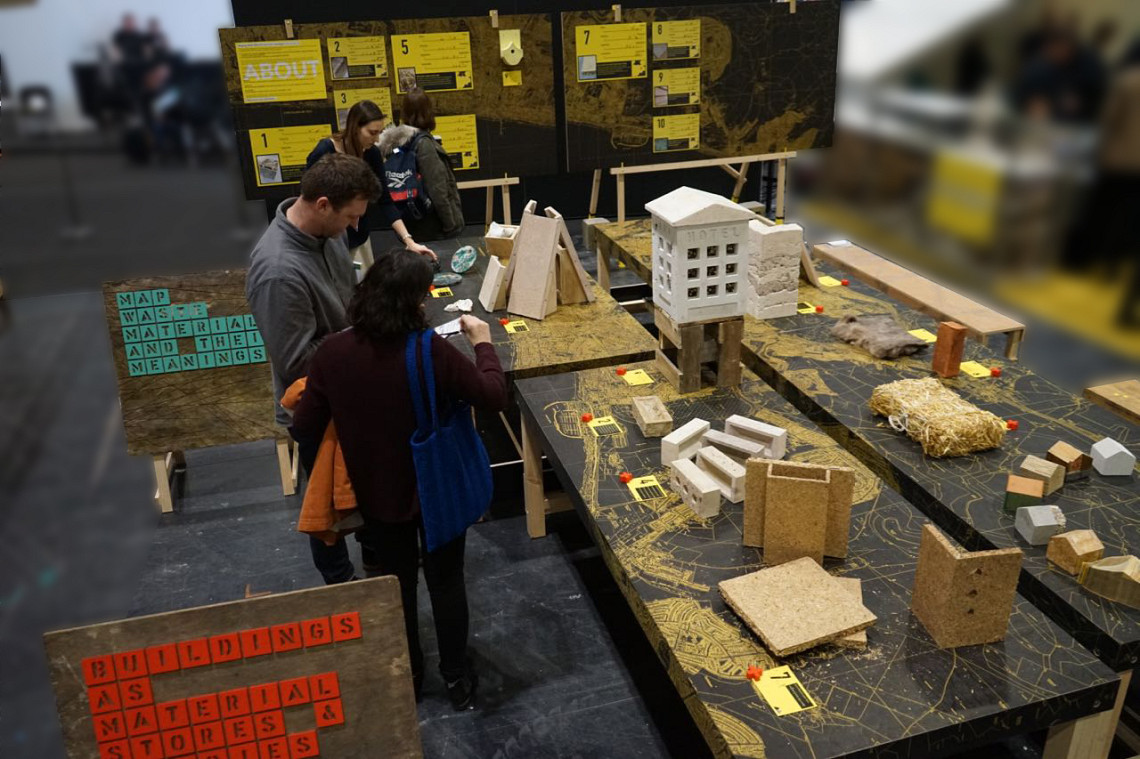
The material methodology maps local 'resources' in the form of particular or peculiar waste streams that are abundant or problematic in the city.
These materials are then considered in terms of their usability and desirability as building materials.
The project seeks to explore the 'behaviour of matter' i.e. the performance characteristics and technicals potentials but also 'matters of behaviour' (Gant 2012) i.e. their potential as having agency in the material language of that place.
In this case the exhibition features research into the use of shell-fish shells (abundant due to restaurant culture) and duvets (again very abundant due to a sharing-tourist economy, hotelier businesses and student housing). Other materials such as chalk or even dog hair are all (re)presented as having technical capacity as insulators or building renders - whilst having real aesthetic and cultural value in providing material stories that the city can be proud of and that are distinctive. This we associate with vernacular architecture - buildings forms and apathetic 'of their place'.
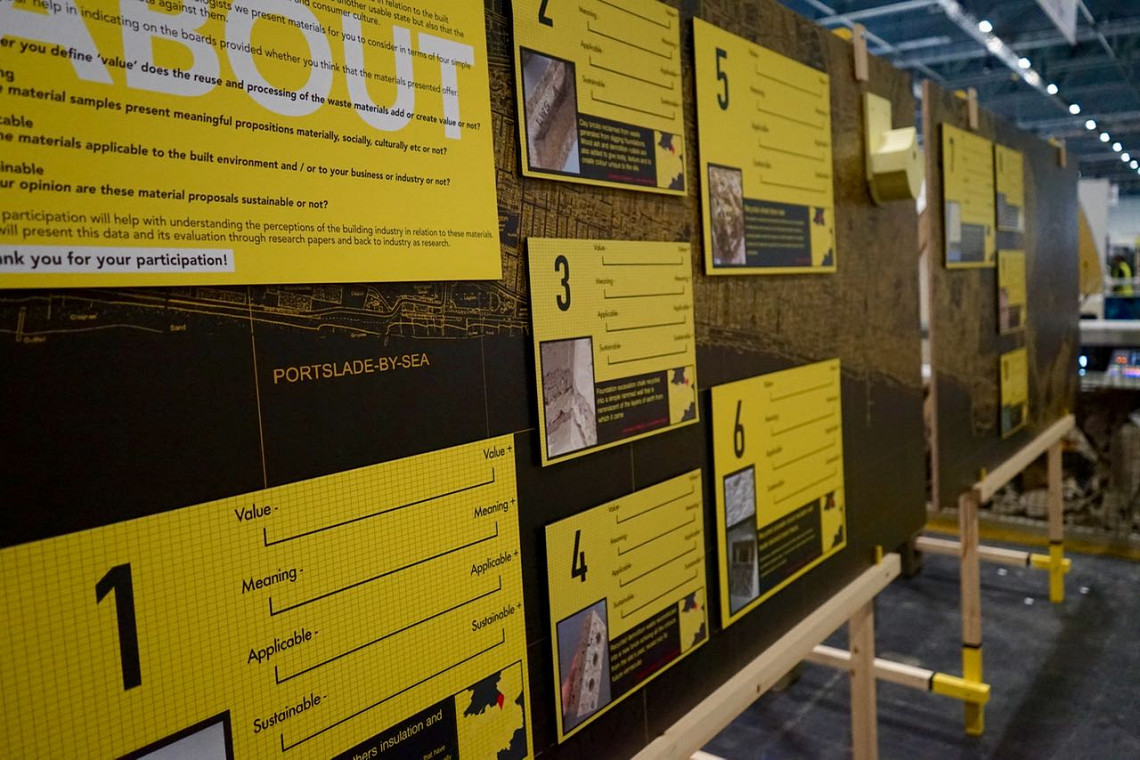
We used the exhibition to gather further data and feedback from the industrial community with regards to the materials and building product research presented.
We have been developing specific data on how much industries value 'meaning-making' in their businesses and the important role material culture plays in generating desirable sustainable products that are (re)made of waste.
This method has helped us understand what type of narratological processes (storytelling) through materials resonate within their practices and how what value they assign to different strategic uses of waste.
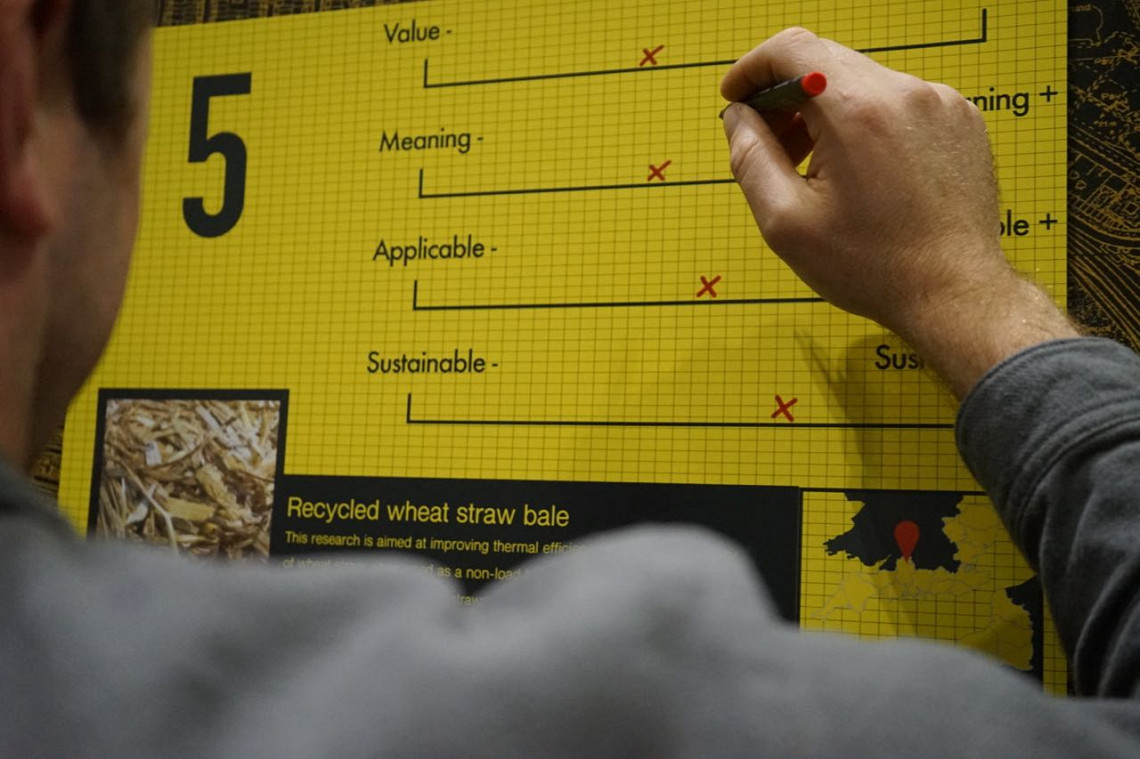
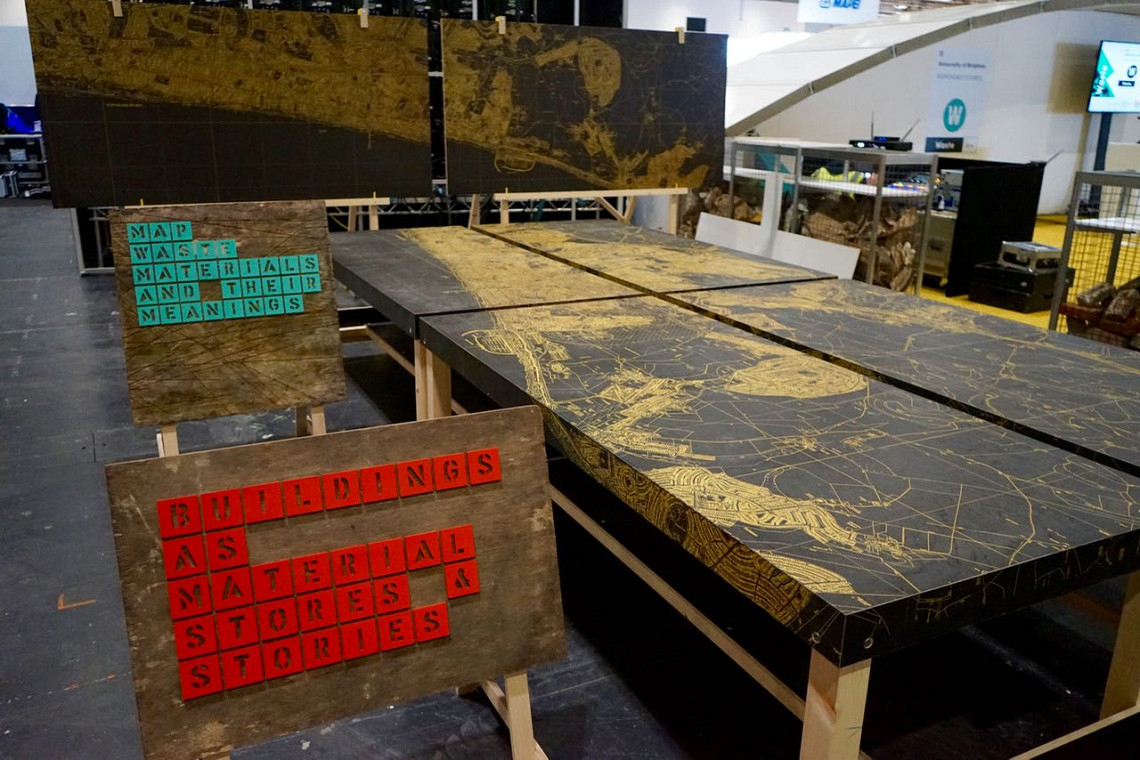
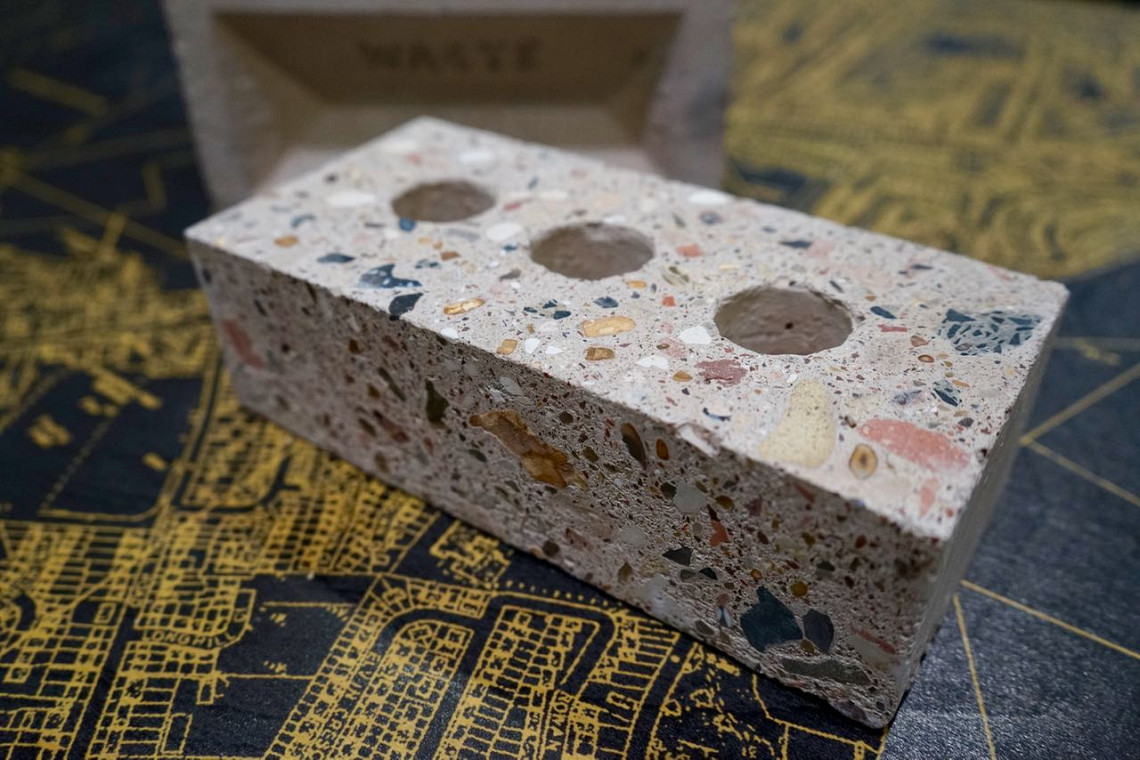
'Buildings as materials stories' also seeks to promote the narratives and stories that can be exploited when we reuse and recycle materials. When we recycle the material we also recycle its history and meaning.
This brick takes waste generated through the demolition of previous buildings recycled into the new building. The aesthetic and manufacture celebrate and elevate the status of the re-application of the material.
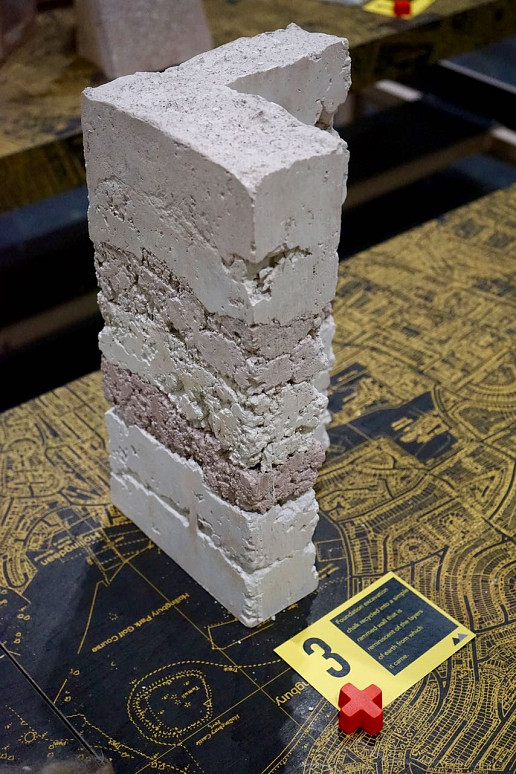
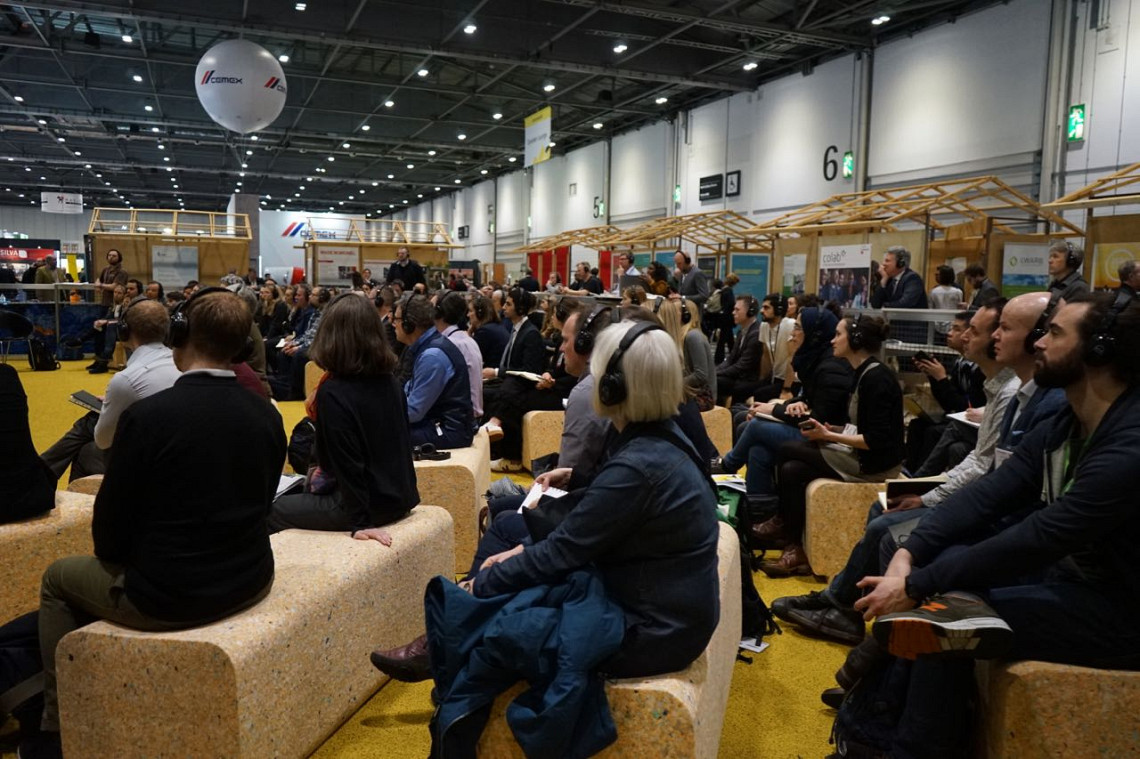
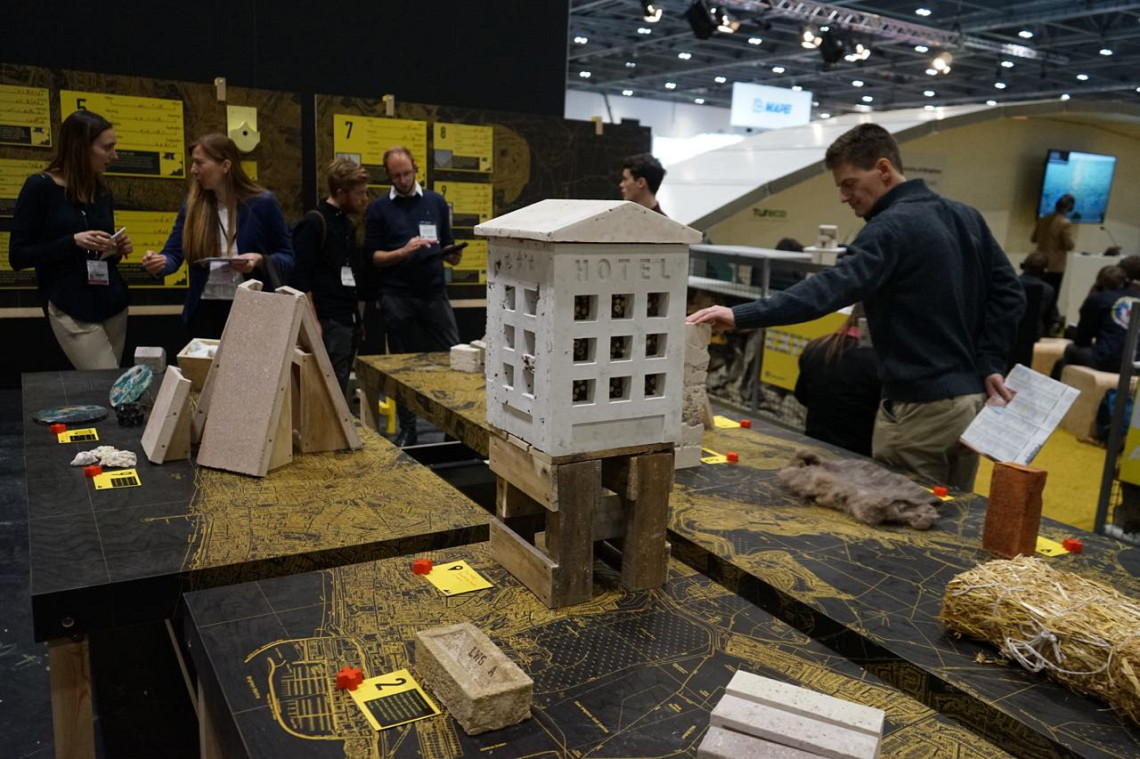
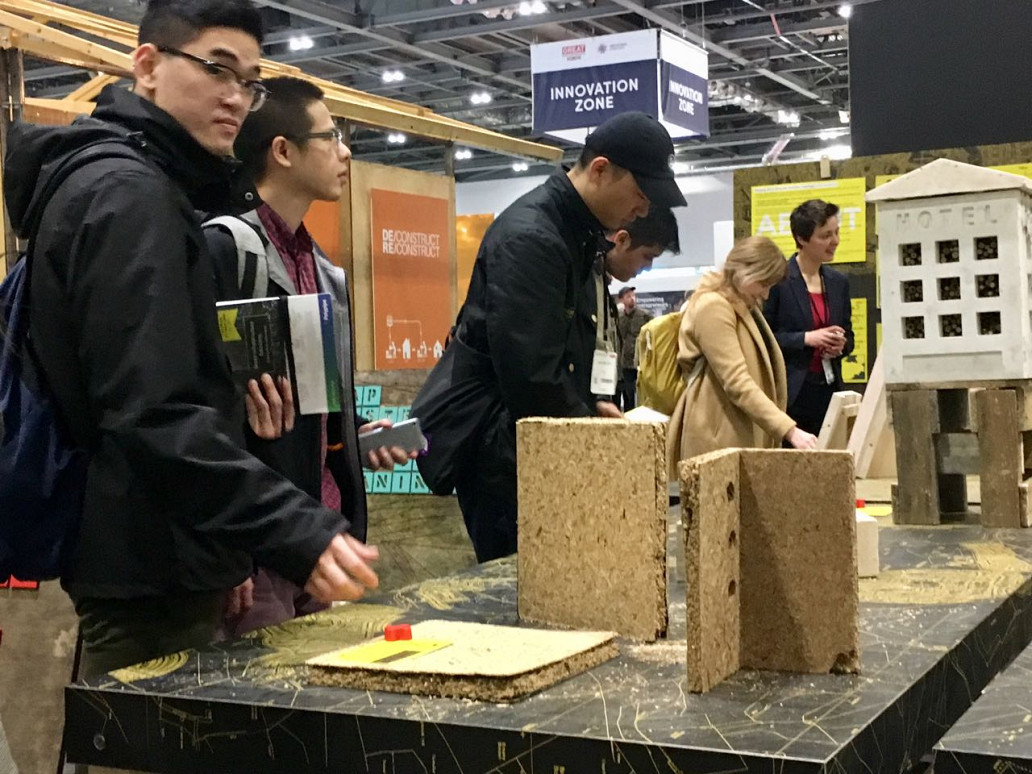
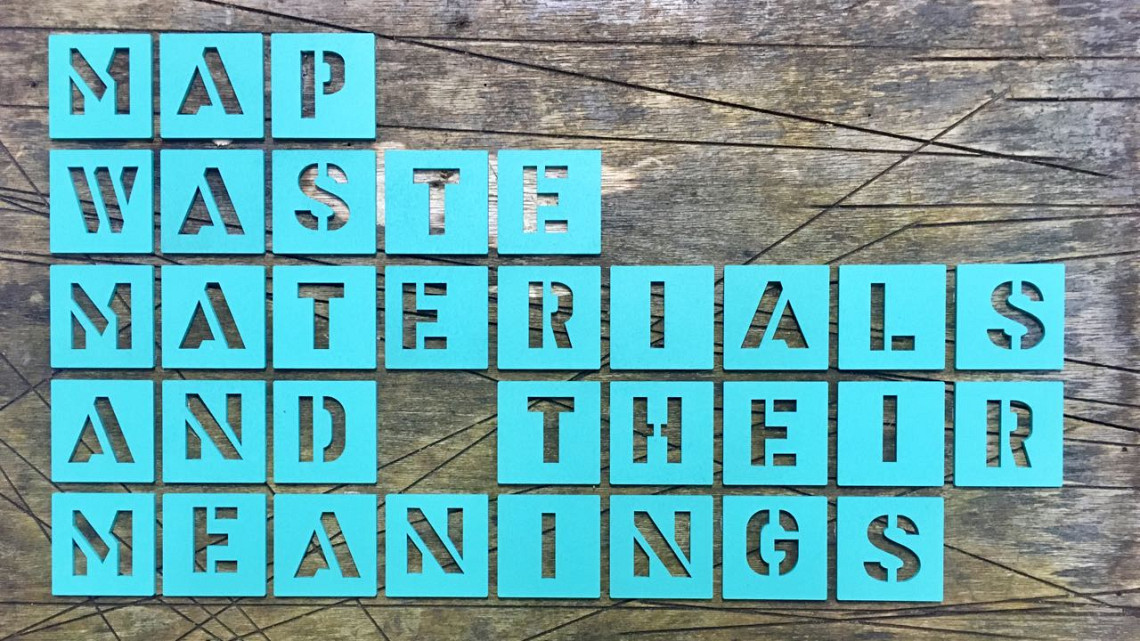

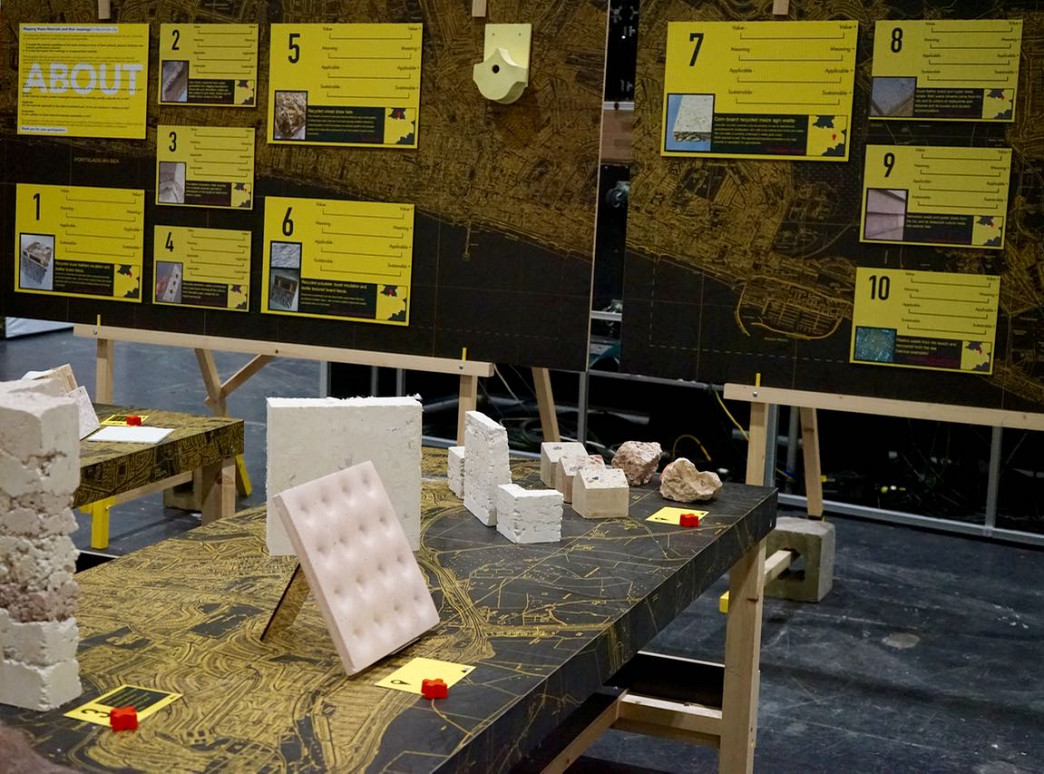
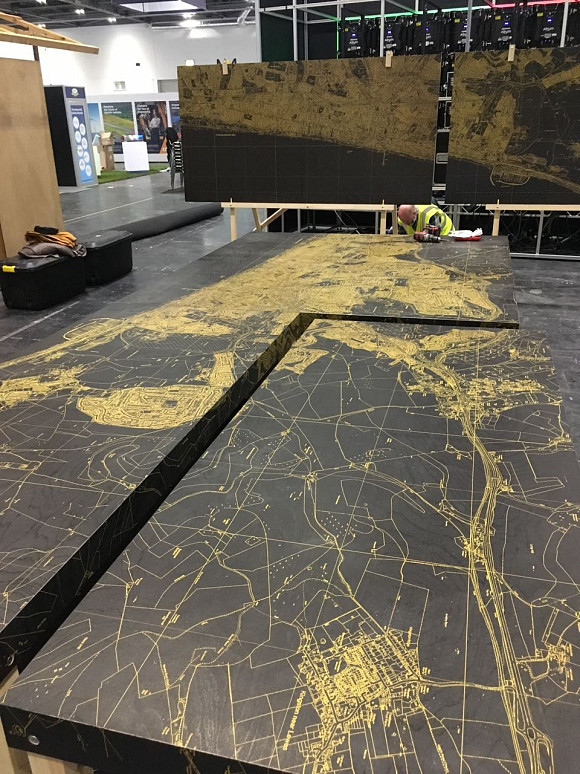
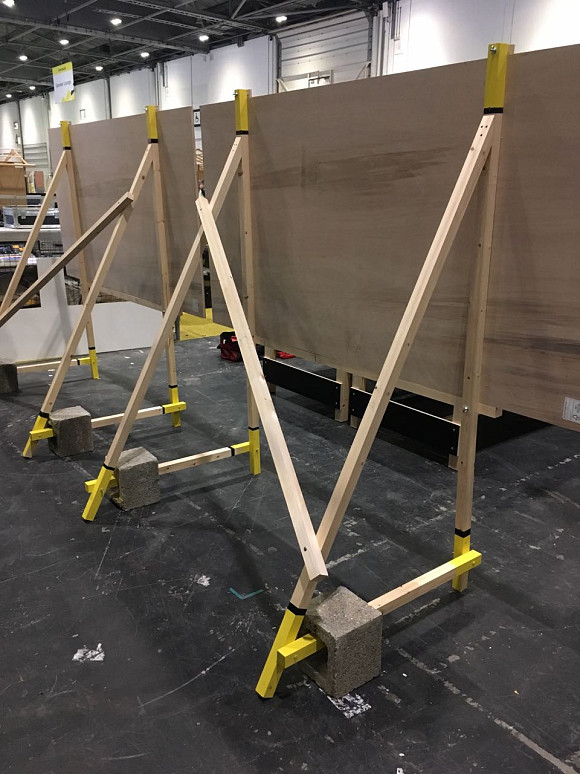
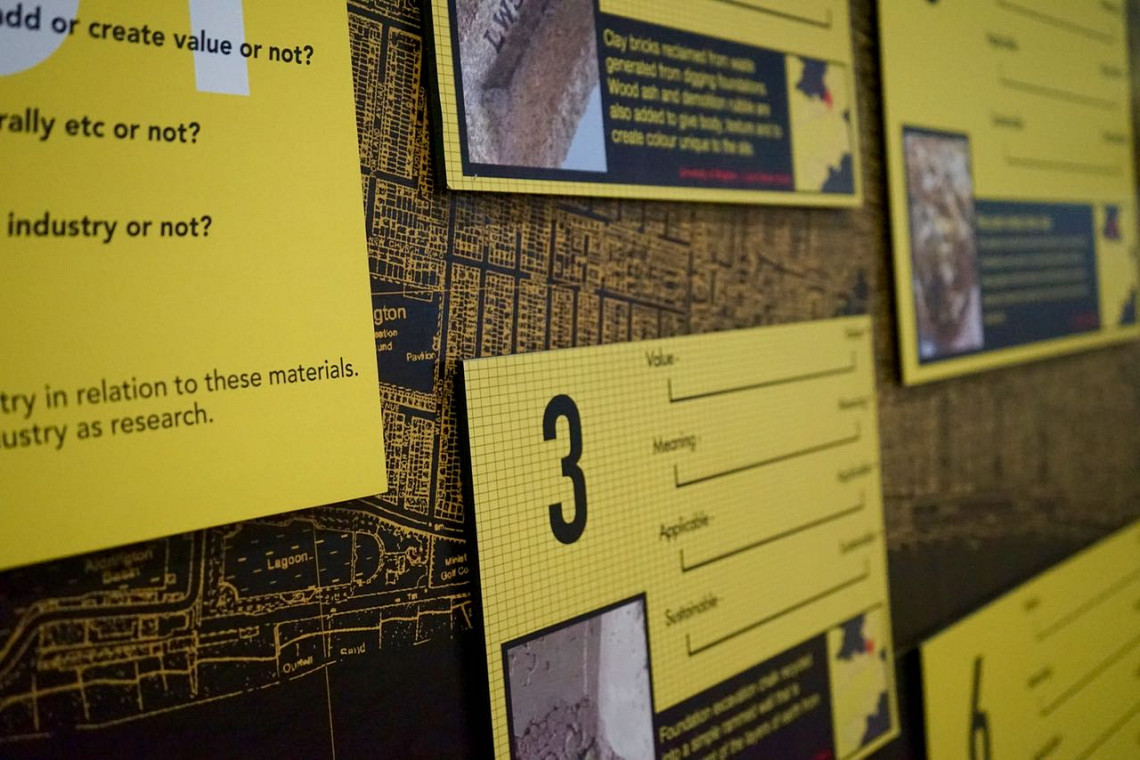

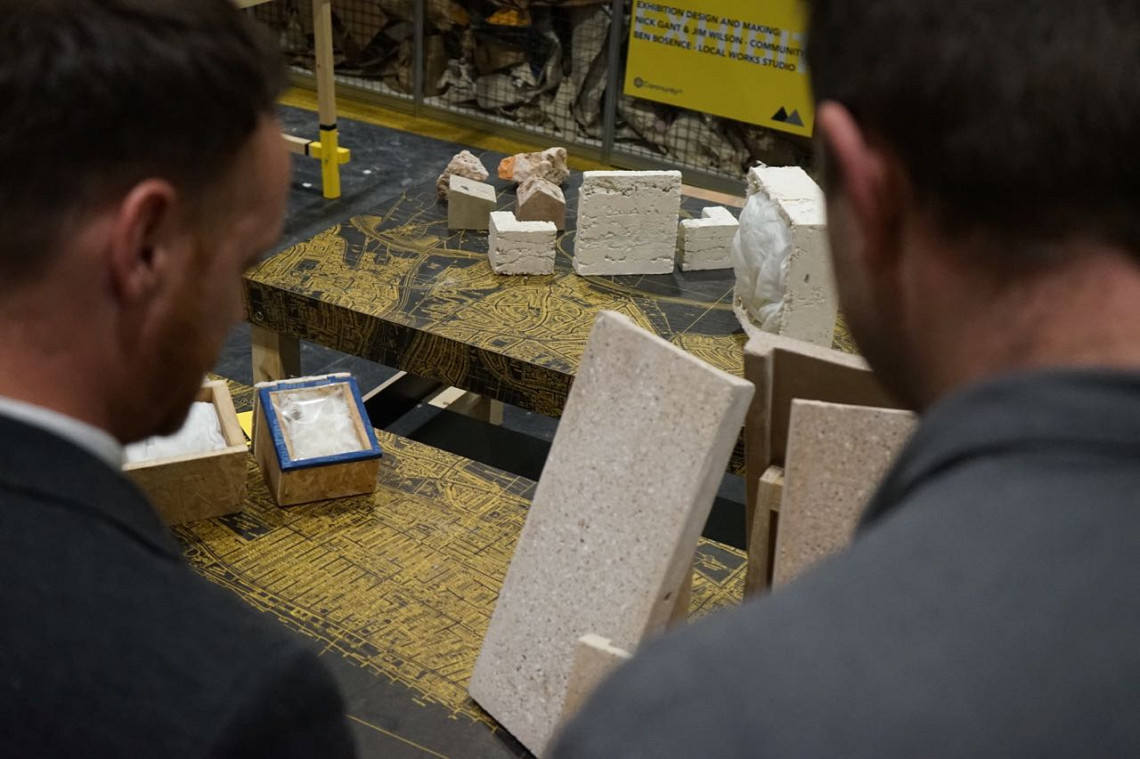

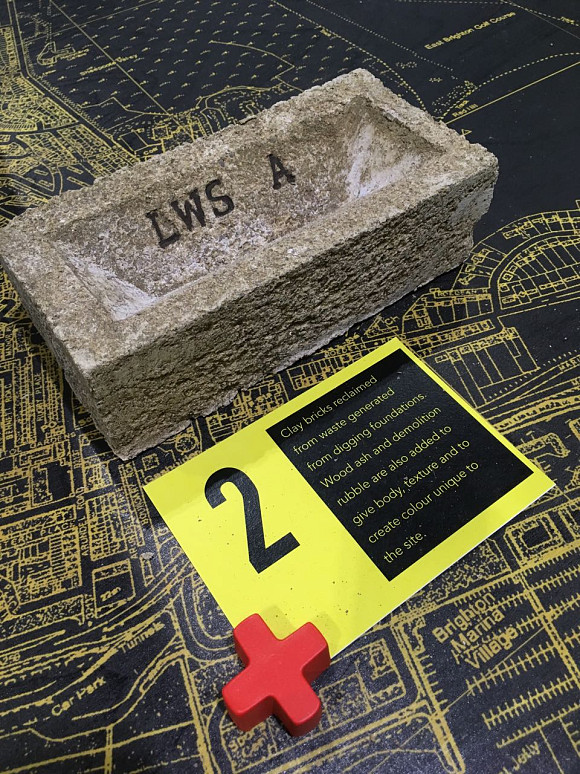

The exhibition was generously supported by SB&WRC Interreg project and EU funding and The WasteZone by The University of Brighton Responsible Futures.
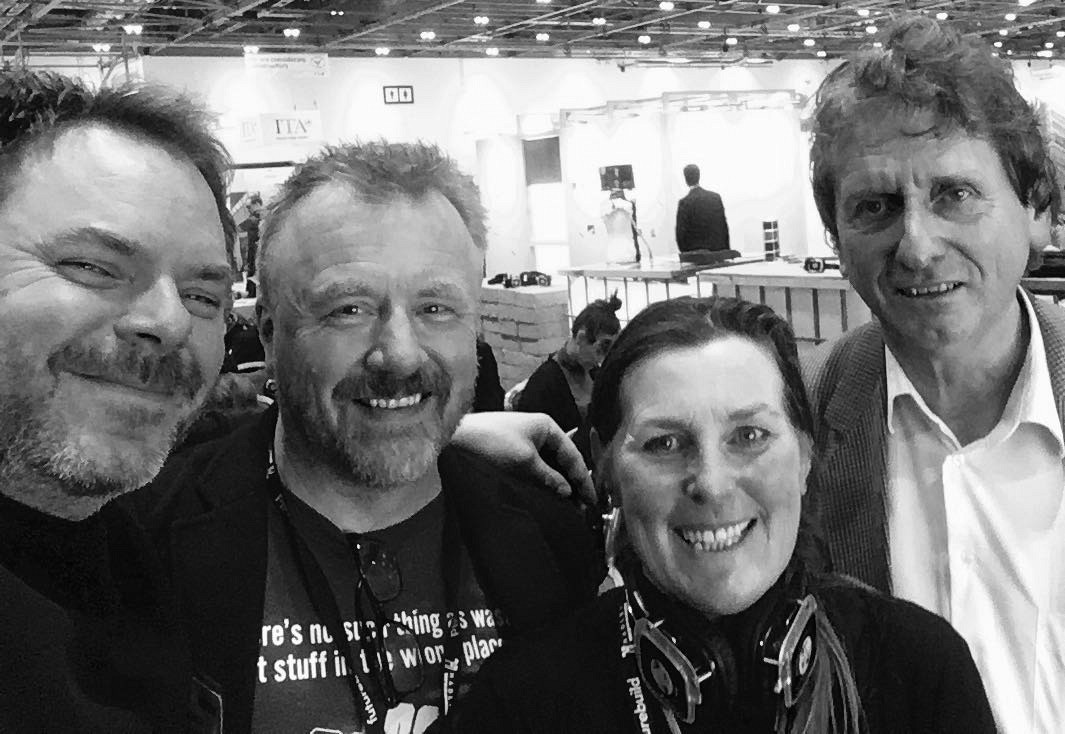
Wastezone curator and architect Duncan Baker Brown, Exhibit designer and researcher Nick Gant, Founder of Freegle Cat Fletcher and Cradle to Cradle author and sustainability pioneer Prof Michael Braungart.
Thanks also to Jim Wilson and Ben Bosence (Local Works Studio) for design and making input.